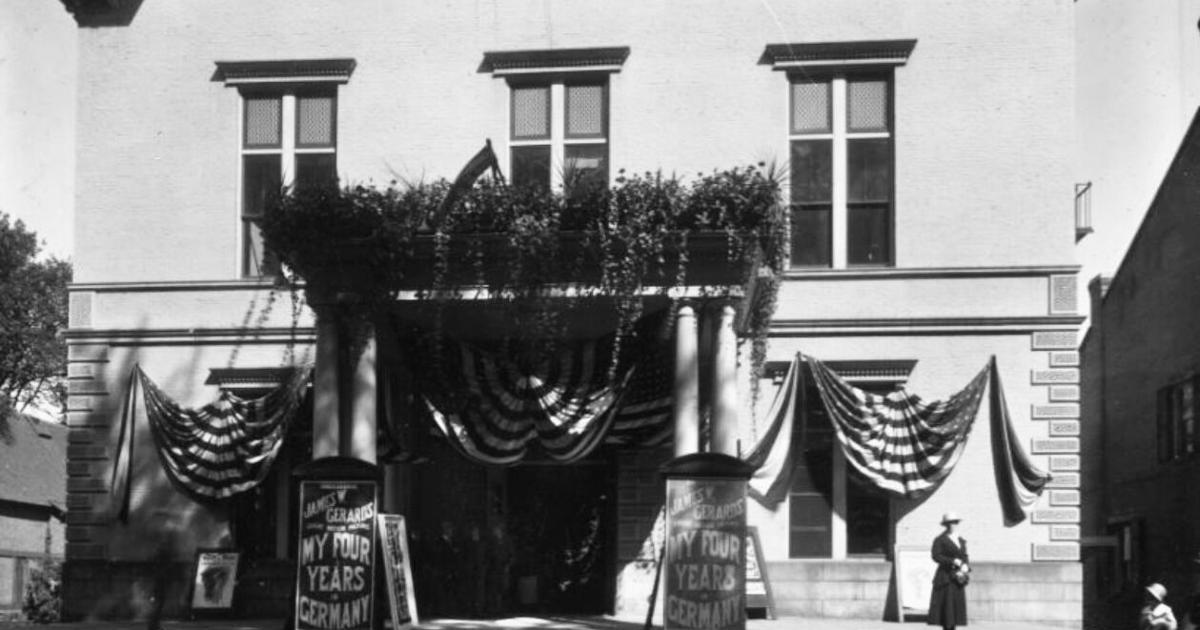February can be a tough month. Winter settles in and doesn’t feel like it’s going anywhere, anytime soon. Snow forecasts no longer bring the tingle of anticipation. By February, joyful memories of childhood sledding have faded. Instead, at the mention of the next heavy weather pattern, muscles used only when shoveling begin to anticipate the ache. Let’s not even think about the outdoor temperatures and bitter winds that cause the trees to creak and crack…
Vermont Februaries have always been tough. Fortunately, 126 years ago they got a little bit better. An amazing new form of entertainment arrived in Brattleboro for the very first time!
In February 1899, Lyman H. Howe came to town with a moving picture exhibition. He had taken technology developed by the Edison Laboratory and modified it to provide mass entertainment in a theater setting. He built his own two-reel projector, added a phonograph player to recreate sounds connected with the moving images, and included backstage crews to provide sound effects.
Here’s how the Vermont Phoenix described the first showing of moving pictures in Brattleboro: “The scenes move, and the sounds that would be produced in real life are recreated for the spectators. It is all marvelously realistic. The audience can hardly realize that they are within the limitations of a show house. The famous train tunnel scene baffles description. The audience feels like they are on the front of a locomotive, drawing a fast-running express train, flying through the country. In the distance looms the mouth of a tunnel into which the train finally plunges. It emerges into daylight and continues its journey through a beautiful country.”
The magic of moving pictures quickly took root in Brattleboro. The Auditorium in the Town Hall showed films on a regular basis beginning in 1900. By 1912 the Princess Theatre opened on the corner of Church and Elliot streets and featured a mix of films with live vaudeville acts. In 1921 Demetrius Latchis opened his first movie theater on Flat Street.
That same year the first major moving picture filmed in Vermont played at the Town Hall Auditorium. The movie was D. W. Griffith’s “Way Down East” and it was a cinematic sensation! While the sub-title of the movie was “A Simple Story of Plain People,” a letter to the Brattleboro Reformer called it “The greatest motion picture in the history of the world.” Lillian Gish starred as the movie’s heroine, Lowell Sherman played the cynical playboy who tricked her into a fake marriage, and Richard Barthelmess played the romantic farm boy who loved her, no matter what.
Much of the movie was filmed in the White River and Connecticut River valleys, but it was based upon a play that centered its story in the state of Maine. During the making of the movie, the St. Johnsbury Republican newspaper wrote, “The Griffith’s moving picture artists are filming the production of ‘Way Down East’ in Vermont. We are glad the movie people appreciate that Vermont can beat Maine at its own game.”
The silent movie was almost two and a half hours long but it is best remembered for the last 10 minutes. During a blizzard, Lillian Gish’s character is stranded on an ice flow and headed towards a gigantic waterfall. Will she survive the ordeal? The film is now in the public domain and can be viewed on YouTube.
The Vermont scenes were filmed in March and April of 1920. D.W. Griffith’s production company moved into the Junction House in White River Junction and filmed on the White River, the Connecticut River, and the Quechee Gorge. Additional scenes were also filmed at the Junction House. In late March the Burlington Free Press reported that “the Griffith company further enlivened White River Junction by staging an old-time New England barn dance in the dining room of the Junction House. Bales of hay, harnesses, and stable outfits of all kinds were added to the room. Word was sent out to the old timers on farms to come in for the dance, making the moving picture the real thing. The scene was full of local talent.” In early April, the Montpelier Argus wrote, “Griffith’s company is still filming scenes. This time an old-fashioned boiled dinner. All the vegetables were raised locally. Film of the party was taken for use in the ‘Way Down East’ picture.”
In June of 1921 the moving picture was shown in Brattleboro for three days. A 30-piece orchestra traveled with the silent film and played during its performances in the Town Hall Auditorium. It was reported that people traveled from as far away as Bennington, Chester, Shelburne Falls, Mass., and Keene, N.H. to see the shows. A movie review stated, “’Way Down East’ will go over the top as the greatest entertainment of its kind ever seen in Brattleboro.”
February is a good month to hunker down with an old-fashioned silent film featuring a barn dance, boiled dinners, Vermont farmers, a death-defying rescue on an icy river, and the final scene in the sugar house that, according to a Vermont reviewer at the time, “finds you with tears in your eyes and a lump in your throat.”
